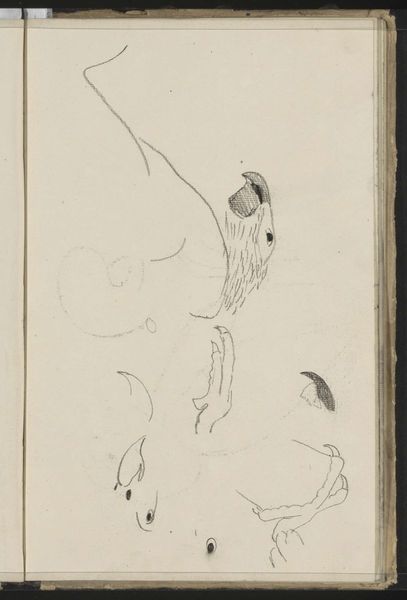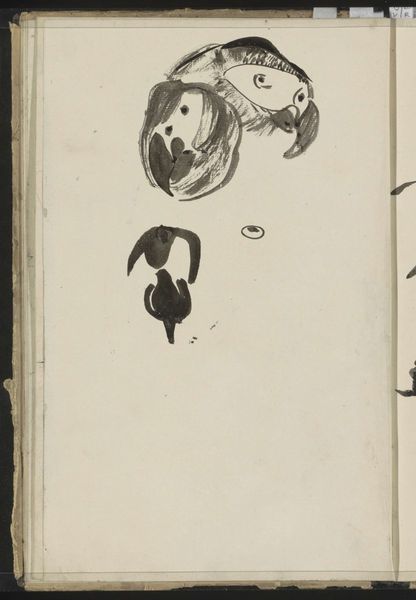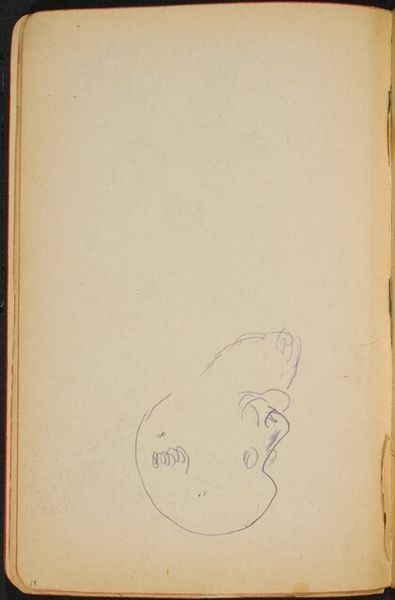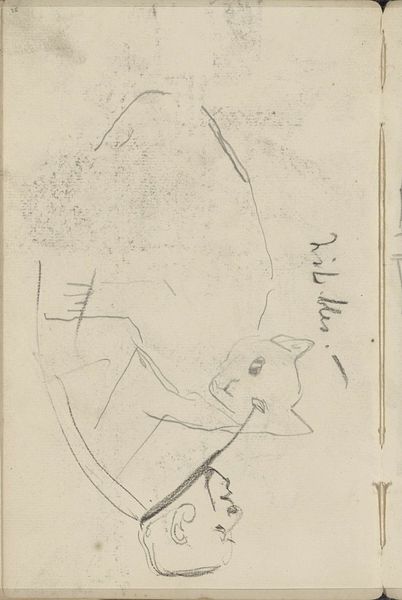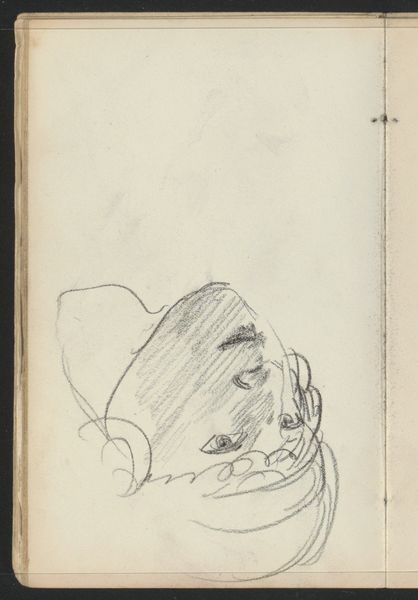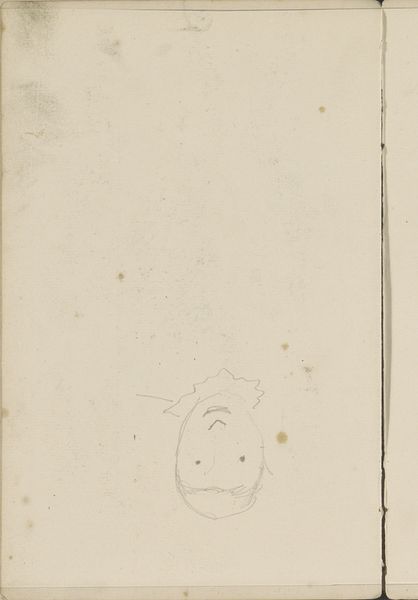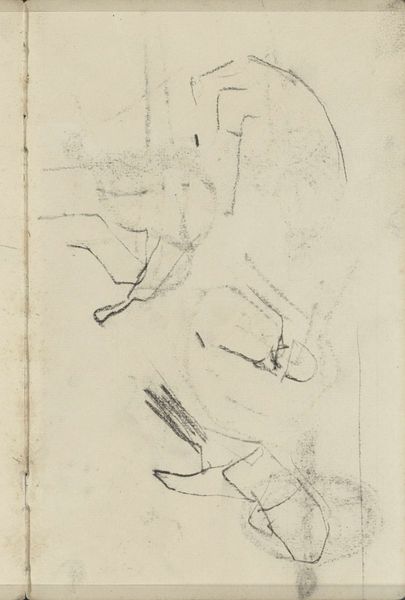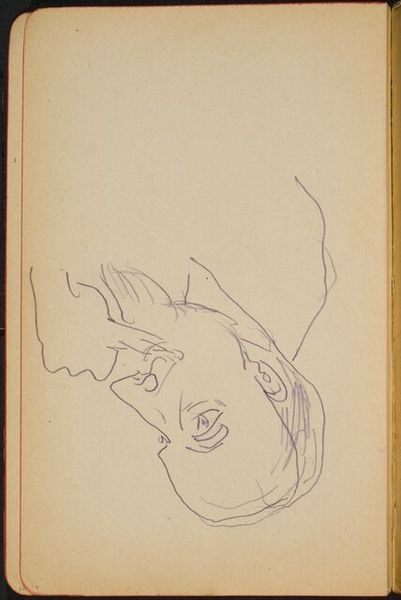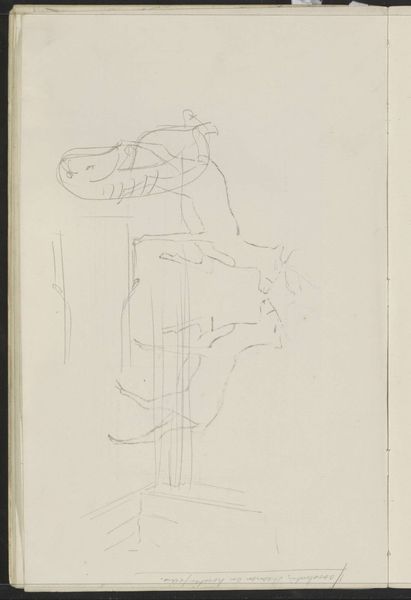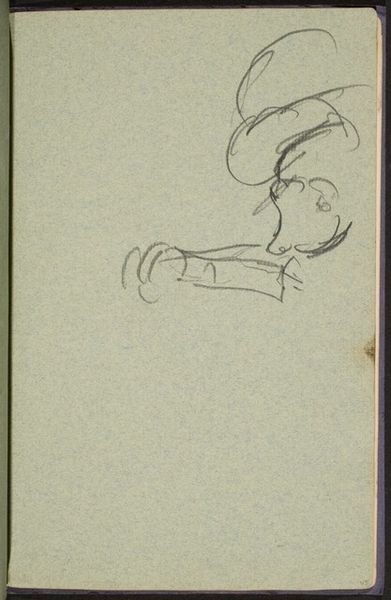
drawing, ink, pen
#
portrait
#
drawing
#
imaginative character sketch
#
toned paper
#
quirky sketch
#
animal
#
personal sketchbook
#
ink
#
ink drawing experimentation
#
pen-ink sketch
#
sketchbook drawing
#
pen
#
watercolour illustration
#
storyboard and sketchbook work
#
sketchbook art
#
realism
Copyright: Rijks Museum: Open Domain
Curator: Welcome. We are looking at a work titled "Head of a Parrot," created around 1890 by Carel Adolph Lion Cachet. It's a delicate drawing rendered with pen and ink. Editor: My initial thought? It’s quirky and a bit unnerving. That piercing eye and those sharp talons suggest more than just a feathered friend. There's a strangeness to the composition. Curator: Cachet was certainly interested in exploring beyond simple representation. This piece gives us insight into late 19th-century Dutch art, particularly the period's fascination with exotic animals, which were becoming more accessible in zoological gardens and through illustrated publications. Editor: Exoticism, sure, but also this feeling of a caged creature trying to escape. Those claws look powerful, yet the line work is so fine, like it could disappear with a breath. It’s caught between raw power and fragile captivity. Does that make sense? Curator: Absolutely. And, indeed, the sketchbook format suggests private observations rather than a commission. So the artwork offers an insight into Cachet’s own perspective of how humans relate to and shape our understanding of these wild beings. The loose forms in the background add to the feeling of observation, where only the essence of the parrot is captured. Editor: It makes you wonder, doesn't it? What other creatures did he observe, and how did he view his own place in this world? I love that it sparks questions about how we interact with the wild, and what we take when we "observe" or try to "capture" its essence. Curator: And that’s where we find the importance of a piece like this in a public collection, to encourage this continued examination and conversation about humans' relationships to the world we occupy. Editor: Well said. I’ll never look at a parrot the same way again. Curator: Indeed, it is an encounter, not merely a drawing.
Comments
No comments
Be the first to comment and join the conversation on the ultimate creative platform.
